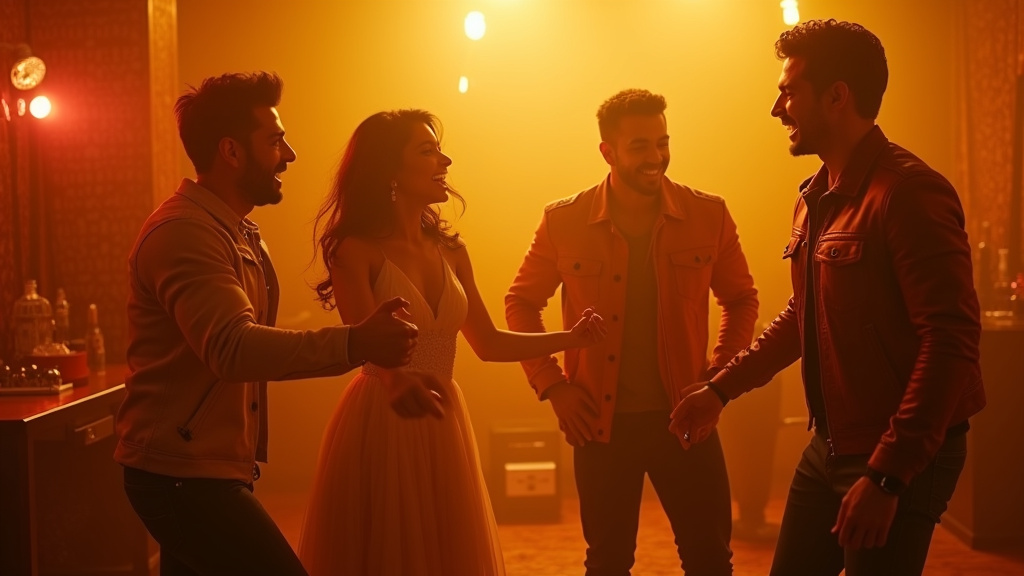Fake Apology Letter Goes Viral After CEO and HR Head’s Concert Kiss Cam Moment
The internet has been set ablaze following the surfacing of a video capturing a personal moment between Andy Byron, CEO of a prominent firm, and Kristin Cabot, the company’s Head of HR. The video, innocently captured by a kiss cam at a recent Coldplay concert at Gillette Stadium in Boston, has quickly gone viral, sparking widespread amusement and commentary across social media platforms. This has been further amplified by the appearance of a fabricated press release, adding another layer to the unfolding online saga.
The Kiss Cam Controversy
The genesis of this online firestorm lies in a seemingly innocuous moment caught during a concert. The kiss cam, a staple of live sporting and entertainment events, happened to focus on Byron and Cabot as they shared an intimate moment. The resulting footage, showing the pair’s interaction, was swiftly disseminated across platforms like X, formerly known as Twitter, where it garnered immediate attention. The speed with which the video spread highlights the instantaneous nature of modern media and the public’s fascination with the private lives of public figures.
The initial reactions ranged from lighthearted amusement to more pointed commentary. Many users took to the platform to express their surprise, share jokes, and speculate on the implications of the video. The incident tapped into a wellspring of online culture, where viral moments can quickly transform into trending topics, igniting countless memes, reaction videos, and discussion threads. The spontaneity of the kiss cam, coupled with the high-profile status of those involved, proved to be a potent combination for social media engagement.
The Emergence of a Fabricated Press Release
Adding fuel to the fire, a fabricated statement, styled to resemble an official press release, began circulating online just hours after the video went viral. The document, dated July 17, 2025, purported to be an apology from Andy Byron. It was a clear fabrication, yet its clever construction and the context of the existing controversy ensured that it received substantial attention. The appearance of the fake press release signifies the increasingly blurred lines between reality and fabrication in the digital age. It also underscores the speed at which misinformation can spread and be misinterpreted.
The format of the fabricated release, mimicking the style of a corporate communication, further intensified the viral nature of the story. The details it contained, although completely invented, were designed to be provocative, ensuring that the fabricated story would be widely shared and commented upon. The incident raises questions about the potential for harm when individuals choose to create and disseminate false information, particularly when such information can be easily attributed to real people and situations.
Reactions and Analysis
The swiftness with which the story spread underscores the power of social media to shape public perception. The incident underscores the importance of media literacy in navigating the increasingly complex digital landscape. It also highlights the potential for reputational damage and the need for careful management of personal information in the public sphere.
The Impact on the Public and Future Implications
The incident serves as a timely reminder of the vulnerabilities inherent in a world where information travels at lightning speed. The ease with which the video and the fabricated statement gained traction demonstrates the need for heightened awareness and critical thinking skills among internet users. Furthermore, it points to the evolving challenges businesses and individuals face in managing their public image in the age of social media.
The incident also underscores the importance of fact-checking and verifying information before sharing it. It’s a testament to the power of social media to create narratives, whether factual or not. The incident may also prompt changes in how companies and individuals manage public relations and deal with potential scandals. Further, it will force a reassessment of the potential harms of deepfakes and other forms of digitally fabricated content.
Overall, the incident at the Coldplay concert, and the events that followed, represent a significant moment in understanding the dynamics of online culture, and the intersection of public and private life in the 21st century. It serves as a case study in how quickly a seemingly isolated event can escalate into a major online phenomenon, affecting how people consume, create, and share information.





